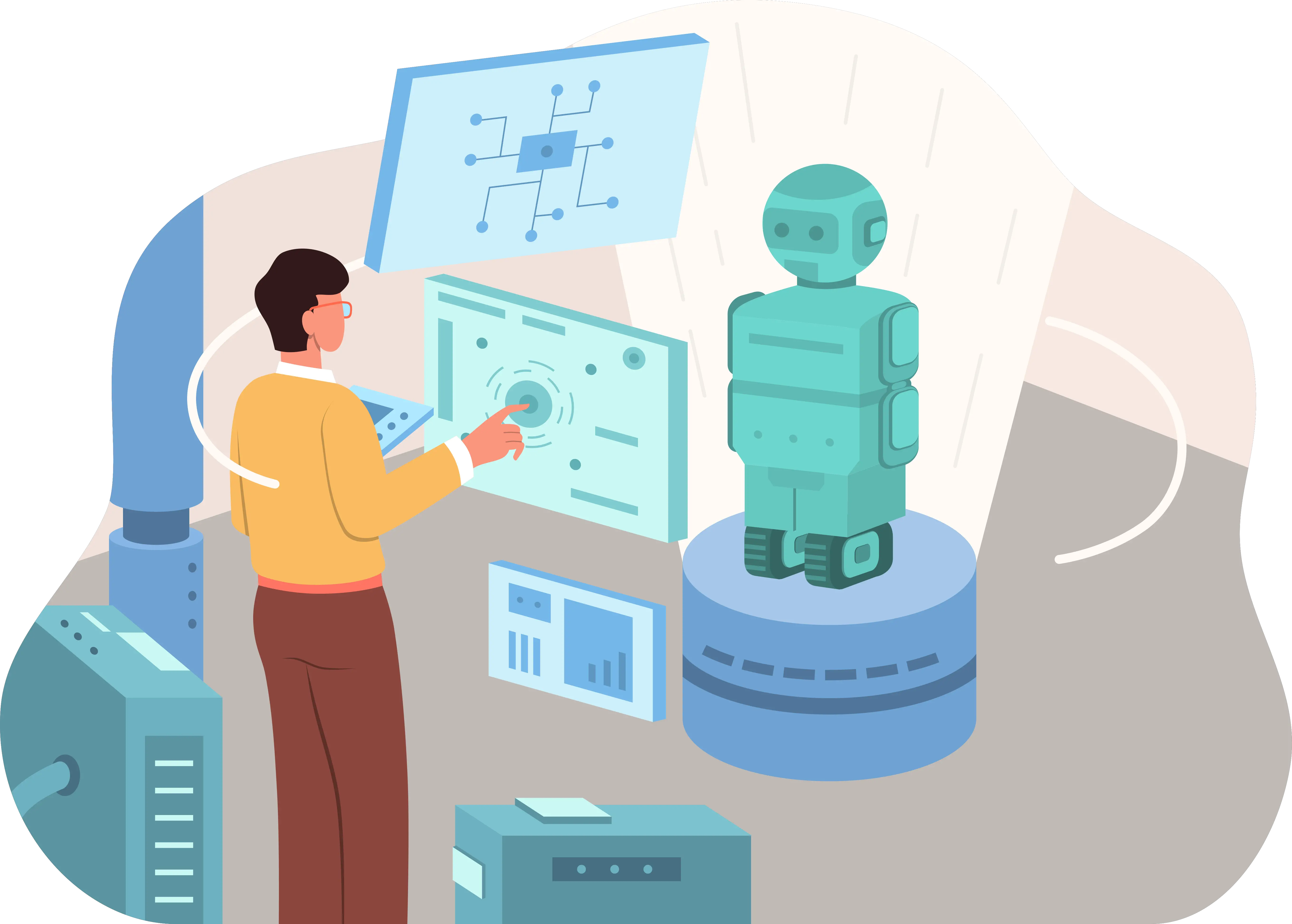The world of AI is bustling with innovation. As developers, we aim to craft intelligent systems that not only comprehend user requests but also communicate effectively. In this endeavor, OpenAI’s language model, GPT-3, has been a boon, and its child model, ChatGPT, is quickly becoming a developer’s favorite for creating conversational AI. Central to unlocking the vast capabilities of this model is understanding and utilizing the ‘ChatGPT login’ feature effectively.
In this comprehensive guide, we will delve deep into the world of ChatGPT and its login feature. We’ll explore how you can leverage this feature to manage multiple conversations, enhance AI contextual understanding, and refine responses through user history. But first, let’s take a step back and understand the foundational concept of the ChatGPT login.
As a developer, you might already be familiar with OpenAI’s impressive language model, GPT-3. ChatGPT is an application of this model, specifically tailored for conversational purposes. The ChatGPT login is a feature that offers developers like you a doorway to an enhanced conversational experience with AI. It’s a passport to a world of personalization, customization, and an improved understanding of user context.
Utilizing Personalized Settings with ChatGPT Login
Personalization in AI interactions is a critical factor that dictates the quality of conversation. With ChatGPT login, you gain access to a range of customizable settings to help you mold your AI’s behavior. From adjusting the verbosity of the AI to setting the conversational tone, the login feature grants you the flexibility you need as a developer.
A user might prefer their AI to be terse and to-the-point, while another might prefer a verbose, detail-oriented AI. With the ChatGPT login, you can accommodate these varying user preferences by tweaking the ‘max tokens’ setting. Additionally, you can adjust the ‘temperature’ setting to control the AI’s randomness. A higher temperature will make the AI’s responses more random and creative, while a lower temperature will make the AI’s responses more focused and deterministic.
What’s even more fascinating is the ‘System level’ configuration. Here, you can prompt the model to behave as an assistant, making the AI prioritize providing helpful and factual responses. Conversely, the ‘User level’ configuration can be used to simulate a user’s input, making the AI generate conversational responses. Utilizing these personalized settings, you can craft an AI experience tailored to each user’s unique needs.
Managing Multiple Conversations with ChatGPT Login
With ChatGPT login, handling numerous conversations concurrently becomes a breeze. This feature lets you maintain multiple conversation threads with distinct state and history. By designating different ‘conversation_ids’ for each conversation, you can manage multiple chat sessions with ease.
A ‘conversation_id’ is a unique identifier that you can assign to each conversation. It allows the system to distinguish between different chats and maintain their histories separately. So, whether you’re building a customer support bot that handles multiple queries simultaneously or an AI tutor catering to several students at once, the ability to manage multiple conversations with ChatGPT login comes in handy.
Besides, the login feature allows you to resume a conversation even after a temporary disconnect. If a user logs out or loses their connection, you can simply use the ‘conversation_id’ to retrieve the chat history once they log back in. This ensures a seamless conversational experience for users, regardless of network hiccups.
Experience unparalleled performance and reliability with Pixels Web Design’s WordPress Hosting Services, expertly engineered to empower your website with speed, security, and seamless scalability.
Leveraging ChatGPT Login for a More Tailored Conversational Experience
Every conversation with AI is a two-way street, and understanding this dynamic is pivotal for building effective conversational models. ChatGPT login allows you to leverage user information and preferences to create a more tailored interaction.
For instance, you can utilize the user’s timezone, language preference, or past interactions to make conversations more relevant and personalized. This is where the ‘user’ parameter in the ChatGPT API comes in. By providing the ‘user’ parameter, you can create a dynamic conversational model that adapts to user specifics.
Moreover, the ChatGPT login feature helps you manage user sessions efficiently. Using the ‘session_id’ parameter, you can maintain the continuity of a conversation, allowing the AI to refer to the user’s immediate past inputs. This can be instrumental in scenarios where user interactions span across multiple requests or in building applications that necessitate a stateful conversation.
Enhancing Contextual Understanding with ChatGPT Login
Context is king in any conversation. It’s no different when conversing with AI. The ChatGPT login feature empowers you to impart context to the AI, which can significantly improve its responses. This context can be provided in the form of a ‘system’ message when initializing the conversation.
The ‘system’ message, which is a special type of message in the ChatGPT API, helps set the behavior of the AI model. For instance, you could use a system message to instruct the AI to behave as a Shakespearean character or as a technical assistant well-versed in Python programming. This ability to establish the context from the get-go can significantly enhance the relevance and quality of AI responses.
Additionally, the ‘system’ message is a great tool for resetting the context in an ongoing conversation. If you wish to change the topic or direction of the conversation abruptly, a well-placed system message can help the AI transition smoothly to the new context.
Artificial Intelligence and Deep Learning with Python
Are you wearied by deep learning resources that don’t clarify every single line of code? “Artificial Intelligence and Deep Learning with Python” revolutionizes the way deep learning, AI, and Python are introduced to beginners. The author draws an insightful analogy, equating a computer language with any other language, asserting that understanding every component of a sentence or a line of code is vital to generate novel ones. Unlike other resources claiming to be for “beginners”, this book stands out by dissecting and explaining every line of code.
There’s nothing more perplexing than encountering an unexplained line of code after an initially well-explained one. This book ensures a seamless learning journey with comprehensive explanations for each line of code in every project discussed, along with detailed insights into deep learning and AI concepts. Whether you’re a Python novice or a seasoned programmer, this book will guide you through the intriguing applications of Python in diverse AI and deep learning projects.
You’ll dive into captivating projects and topics, including:
- Deep learning applications in audio/music and voice recognition
- Neural network implementations with image files
- Creating an algorithm for predicting stock prices
- Applying AI through Thompson sampling
- Using deep learning for crime statistic predictions
- Binary classification with neural networks
- Building a Convolutional Neural Network (CNN) for your image files
- Teaching your computer to “read” and “comprehend” the English language
- SQL integration with neural networks
About the author: Steven D’Ascoli, an adjunct professor at St. John’s University, is renowned for his multi-disciplinary expertise.
Improving Chat Interactions through Personalized Login
Personalization can truly make a difference in AI chat interactions. With the ChatGPT login, you have a powerful tool to refine and improve these interactions. The feature enables you to employ user history and feedback to adapt the model’s responses over time.
Feedback from users can be a goldmine of insights. It can inform you about what’s working well and where the model falls short. By utilizing user feedback and interaction history, you can continuously improve the model, thus enhancing the user experience.
Remember, though, that user data should always be handled with utmost care. Adhering to privacy standards and ensuring user data security is non-negotiable. With the right precautions in place, user data can become a valuable asset in training your AI to provide more targeted and useful responses.
The Role of User History in Refining ChatGPT Responses
User history can act as a valuable guide to refining ChatGPT responses. Each user interaction with the model leaves behind traces that can be analyzed and utilized to improve future interactions. With ChatGPT login, you can maintain a user’s conversational history and leverage it to refine the model’s responses.
For instance, if a user consistently asks questions about a particular topic, the model can learn from this pattern and provide more detailed and contextually relevant responses in the future. Similarly, by analyzing a user’s choice of words, sentence construction, and other linguistic patterns, the model can adjust its own language to mirror the user’s style, thereby creating a more engaging conversational experience.
In summary, by making use of user history, you can teach your model to learn and evolve with each interaction, making the AI truly conversational and responsive
Conclusion
Through the course of this blog post, we have journeyed into the realm of the Conversational AI, unearthing the immense capabilities and potential of ChatGPT login in refining user experience. With its ability to maintain conversational context, utilize user history, and personalize settings, ChatGPT login acts as a powerful tool that can be leveraged by software developers for a more tailored conversational experience.
The significance of context and personalization in AI chat interactions is profound. With ChatGPT login, these aspects can be integrated effortlessly into your chat model, enhancing not only the relevancy of AI responses but also the overall user experience. By facilitating a unique user-ID-based system, ChatGPT login allows for tracking of user history and preferences, opening doors for constant learning and improvement of the AI model.
Furthermore, the adaptability of ChatGPT with the help of user history and feedback turns it into a truly responsive and evolving conversational AI model. Each interaction serves as an opportunity for the model to refine its responses and become more attuned to the user’s needs and preferences. This dynamic nature of ChatGPT holds great promise in advancing the field of conversational AI.
As we look towards the future, it is clear that the role of AI in our daily lives will only become more pronounced. In this rapidly evolving landscape, tools like ChatGPT login will be instrumental in shaping the nature of human-AI interaction. By harnessing these tools effectively, developers can create AI models that are not only intelligent but also intuitive, context-aware, and truly conversational.
In conclusion, ChatGPT login is a gateway into a more personalized, context-aware, and adaptive conversational AI experience. It paves the way for a future where our interactions with AI are as effortless and enriching as our conversations with fellow humans.

Unleashing the How I created a mascot for Social Media
Explore the transformative role of AI in marketing, its implications in digital marketing, customer experience, and social media marketing strategies, and its future prospects.

Unveiling the Future: How Artificial Intelligence is Transforming Genetics and Genomics
81 / 100 Introduction With the accelerating growth of technology, we stand on the precipice of groundbreaking discoveries that could fundamentally alter our understanding of







